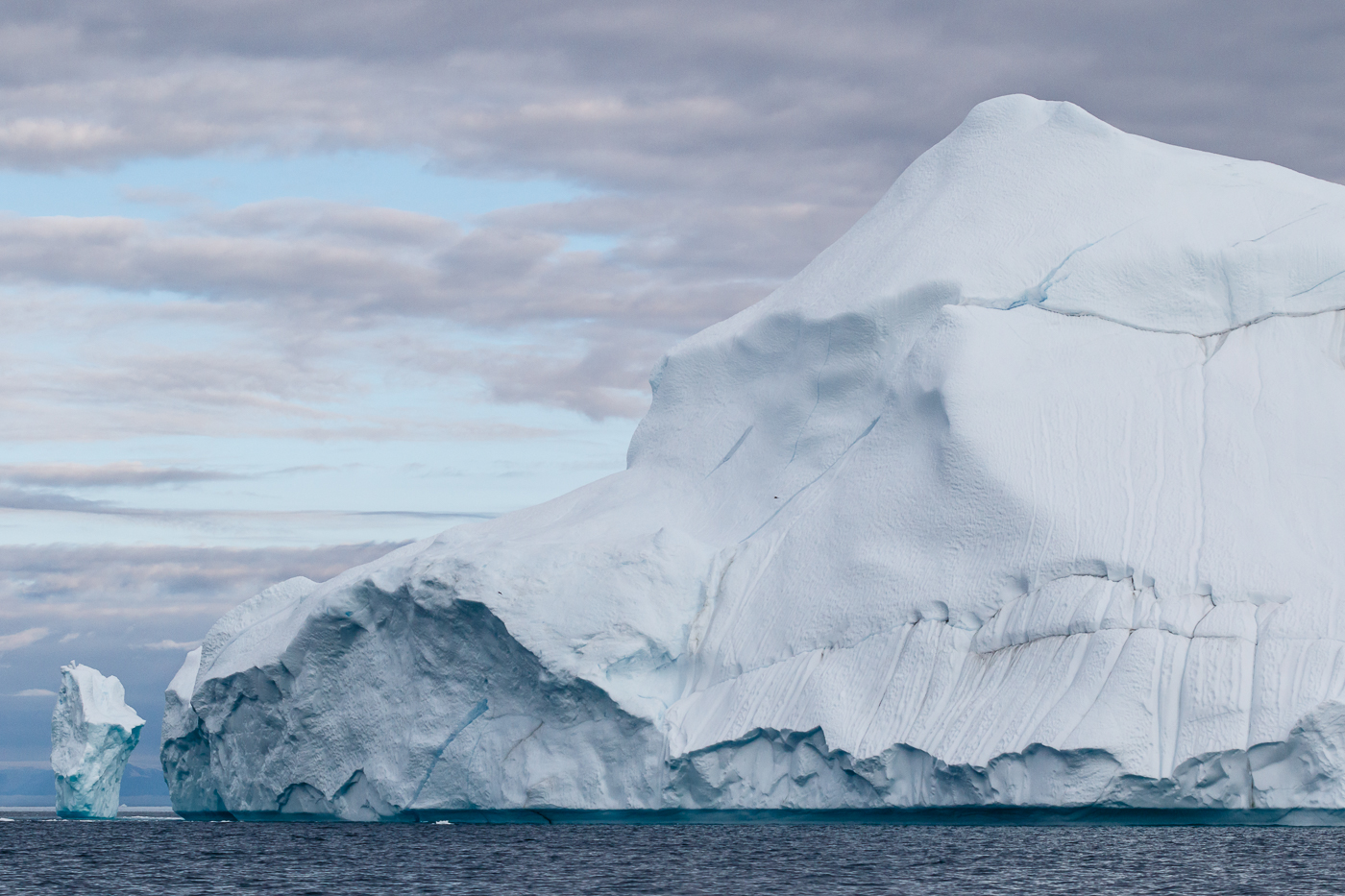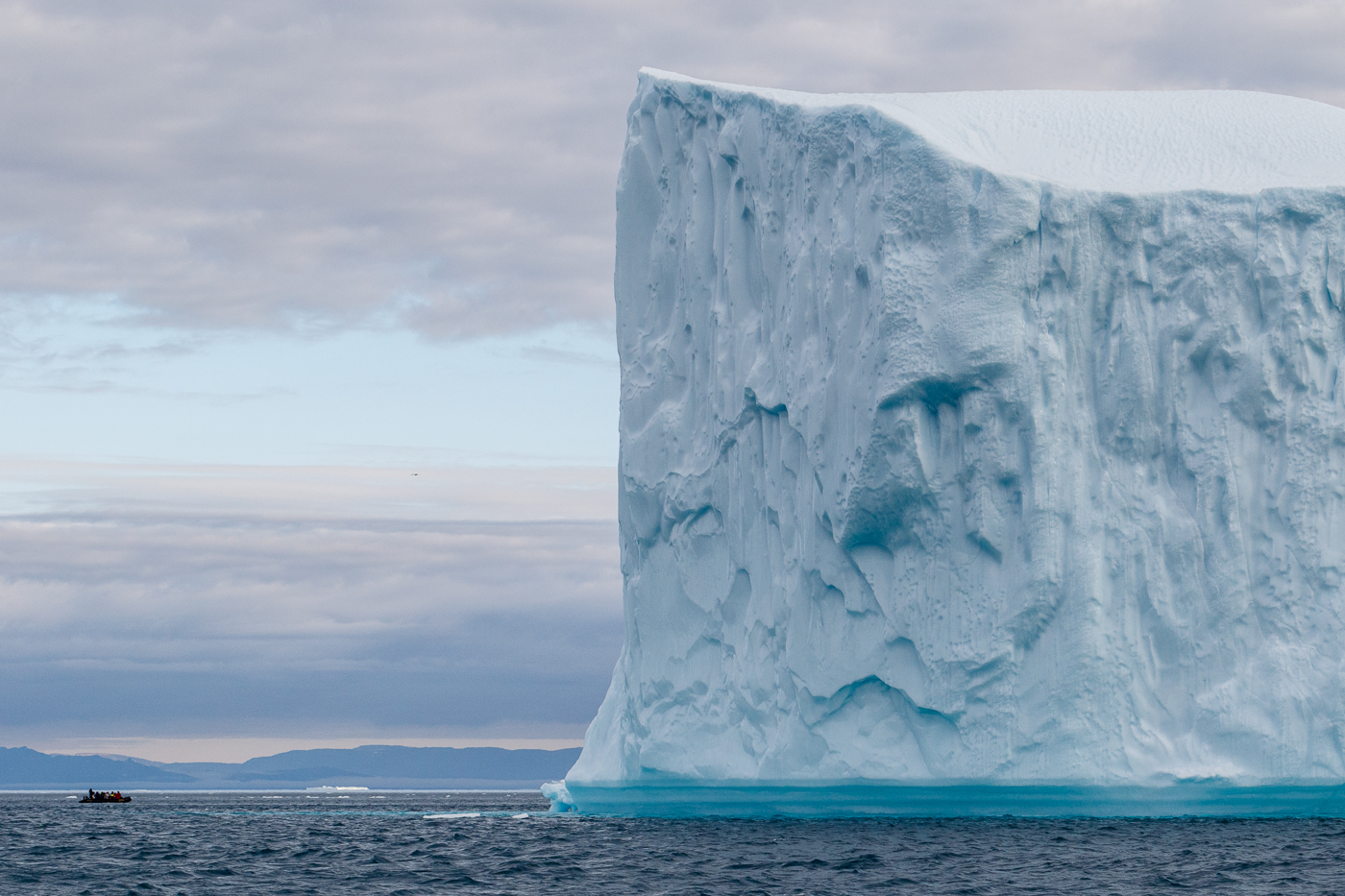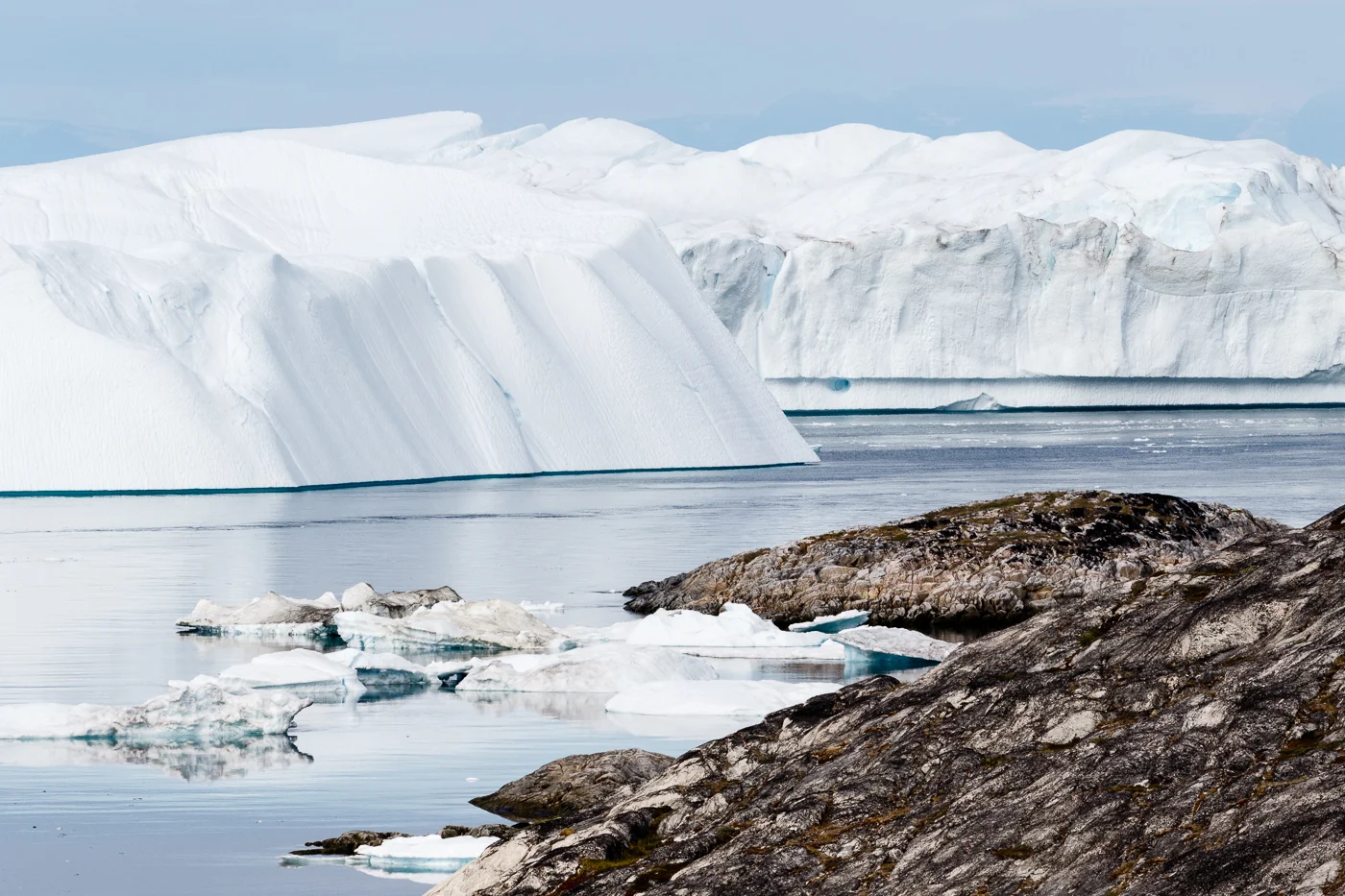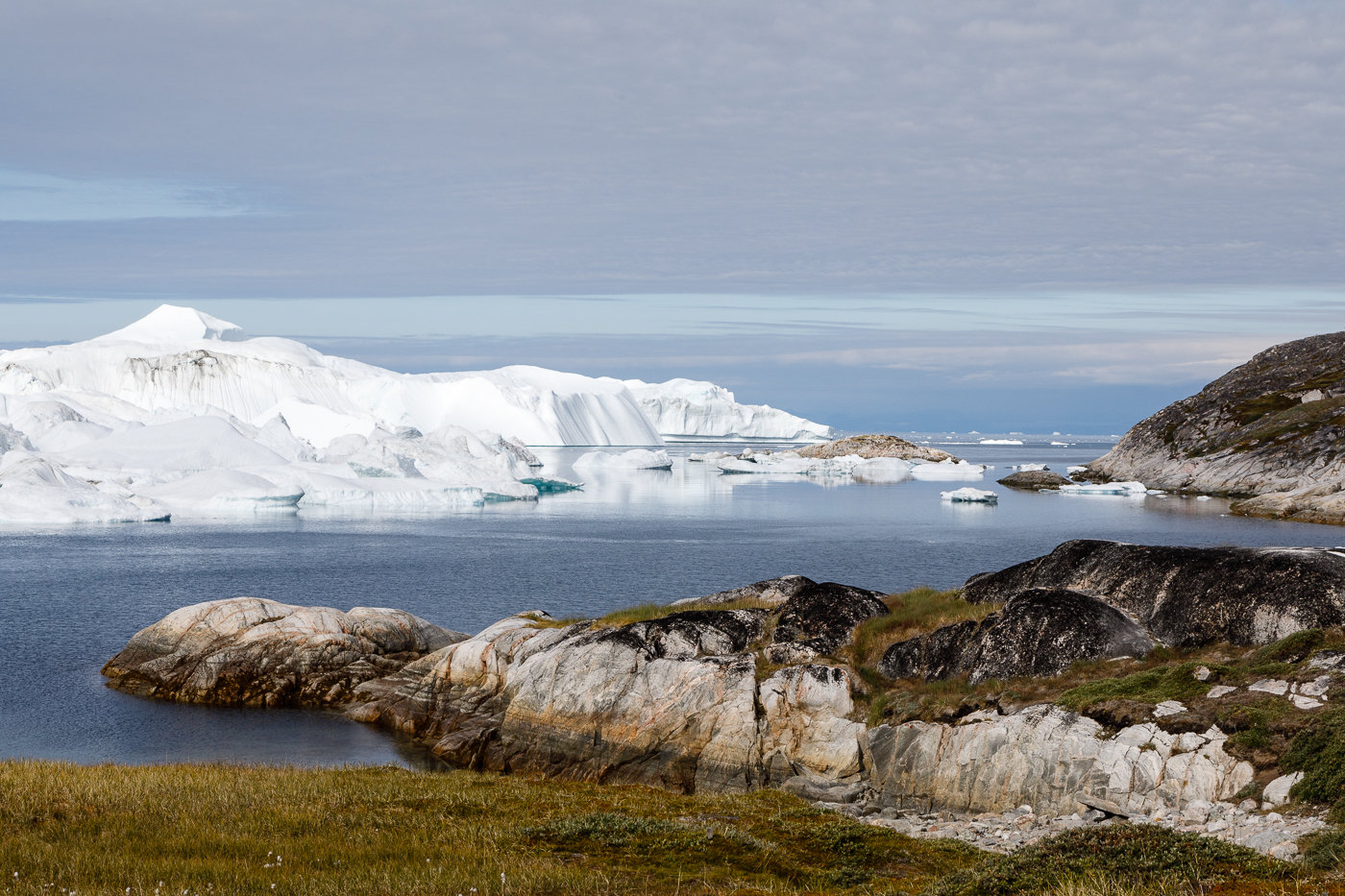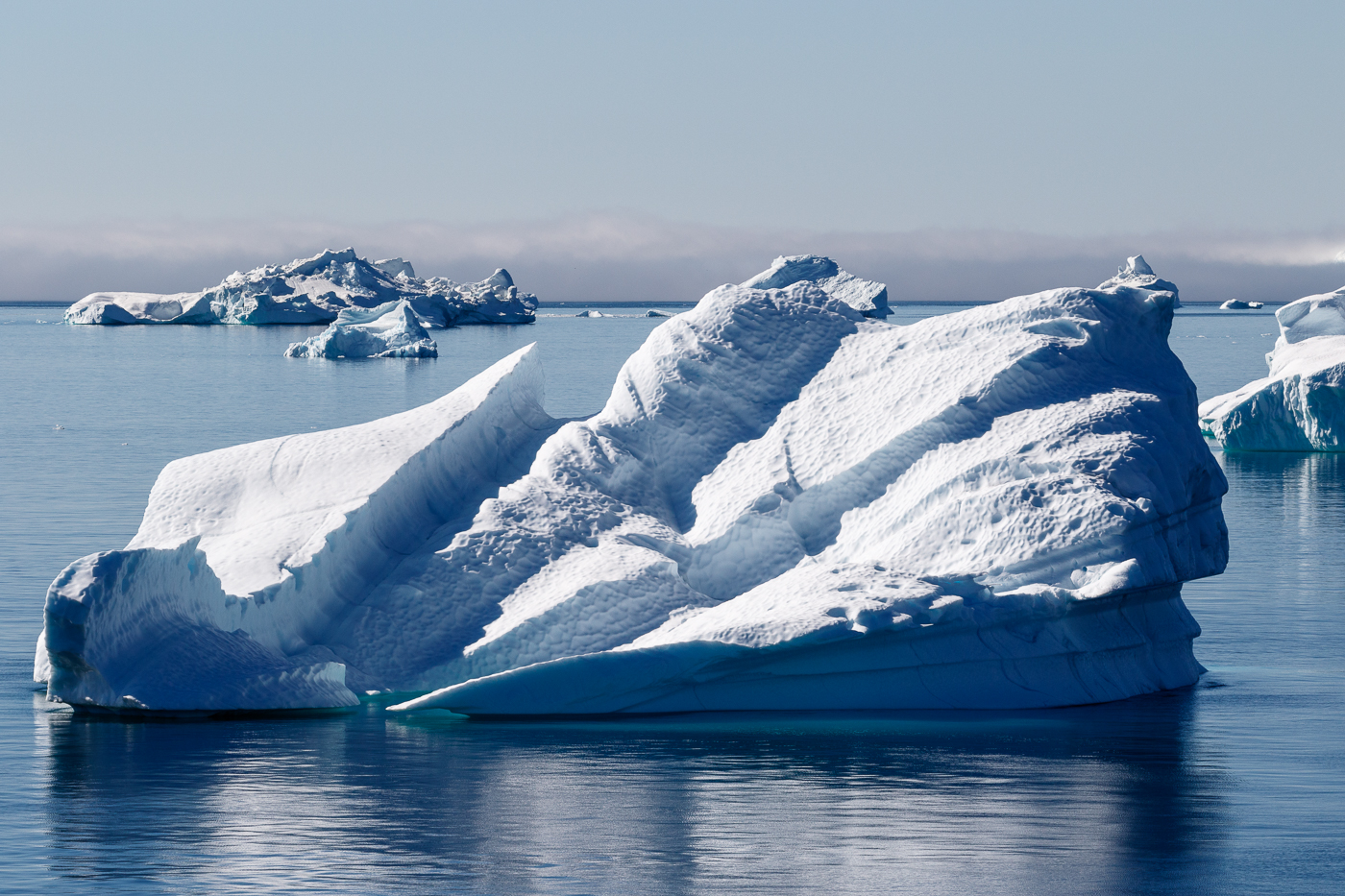Icebergs are amazing in every sense of the word. Massive, beautiful and powerful floating blocks of ice, some as large as buildings, others in the shape of giant columns, wedges, or other formations. Seen up close they invoke awe and a strong appreciation for the forces of nature. And as large as they are, only 10% of their mass is visible, the rest remaining below the surface. These icebergs calved from the Greenland ice cap. They will initially travel north, pushed by ocean currents, and then start their journey south where they'll melt along the coasts of Labrador and Newfoundland.
The scale is hard to describe. The smaller iceberg on the left is higher than many buildings; the larger one the size of several city blocks.
Icebergs assume different shapes and names are given to the various formations. This one is a "Pinnacle"; the first image is a "Dome". They weigh between 100,000 and 200,000 metric tons.
Icebergs remain in the water for months and often years, their shape changed by water, weather and time. This one now has deep caverns along one side. On the narrower side at the left daylight can be seen filtering through the cavity. Icebergs with slots or channels through are described as "Dry-Dock".
Deep cracks appearing at the edge of an iceberg, indicating part of it may be getting ready to split off from the main section.
The tiny zodiac with it's driver and ten passengers on the left edge of the image provides scale and shows just how large these ice formations are. To be on the water, circling closely around them, was an incredible experience.
Black-legged kittiwakes sitting on a small floating piece of ice, with larger icebergs in the background. A few moments later they flew off showing their lovely wings in flight.
A "Tabular" formation. Flat on top, longer than it is high, with sheer sides. It's the length of a city block or more.
Columnar icebergs, probably once part of larger formations, broken off and made smaller by the elements.
These images were taken off the west coast of Greenland near the town of Ilulissat which is the iceberg capital of the Arctic. Across town lies the Jacobshavn Glacier and Icefjord, a UNESCO World Heritage Site. The glacier produces 10% of all Greenland icebergs, with 35 billion tonnes of icebergs calving and passing out of the fjord every year.
Ice sheets, calved from the glacier, moving through the fjord.
While hard to compete with the icebergs the rocks and tundra at the edge of the fjord offer up their own beauty.
Jacobshavn is a fast-moving glacier, calving vast amounts of ice into the fjord each year. Larger icebergs can get stuck in the fjord where they remain until they are broken up by the force of the glacier and the continually moving ice. Looking out across the fjord the vista is a mountain range of ice, moving steadily on its path to open water.
The towns along this Greenland coast are colourful against a backdrop of rugged mountains. And they have these ice structures as part of their landscape.
Some smaller icebergs and floes in and around the fjords and mountains. The beauty of it all can be overwhelming.
I've been drawn to icebergs for a long time. Their beauty, mystery and raw power is unique. As is the soft light and the northern colour palette which I find wonderful to photograph. I first went to the Arctic two years ago and immediately knew I would return. These past two weeks along the coast of Greenland, across Baffin Bay and into some of the northern parts of Nunavut was memorable. This world is beautiful.
